How OPPO invented a new smartphone form factor with a flexible display (using the OPPO X 2021 prototype as an example)
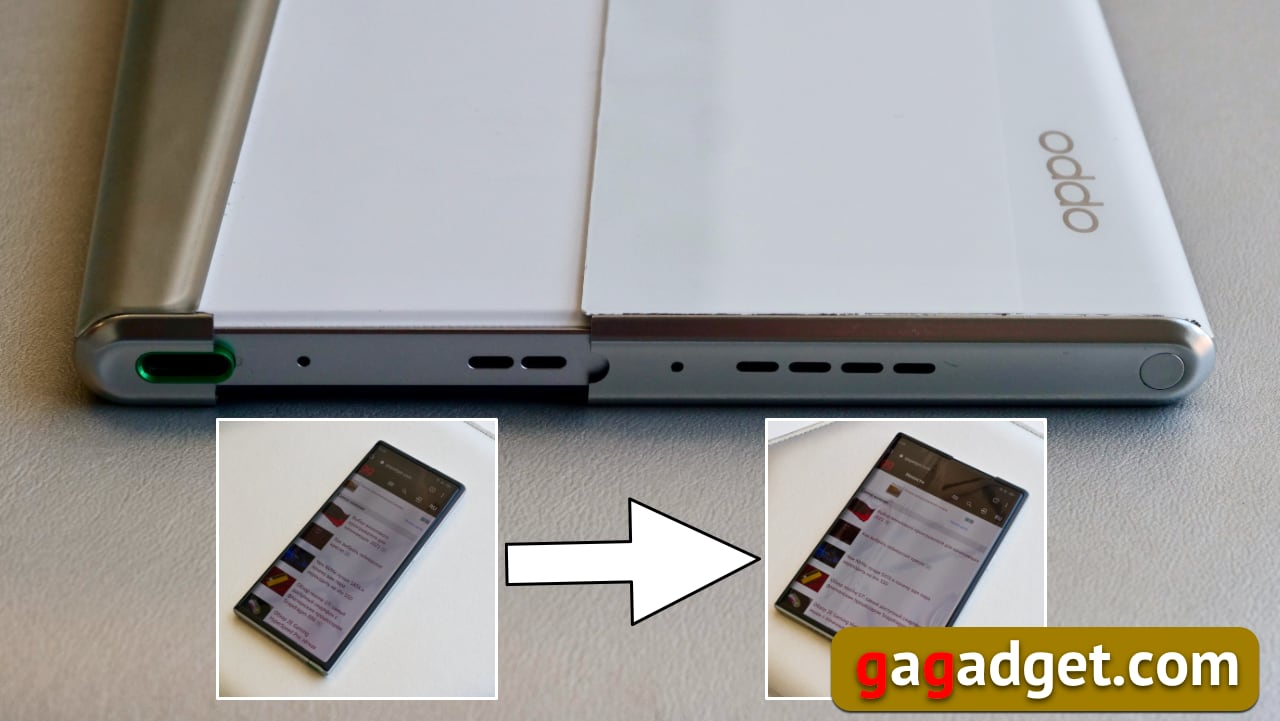
Regular readers of gg, are probably aware that since the first announcements of smartphones with flexible displays, I have been an apologist for this technology and believe that it will have a great future. As a rule, opponents of this idea appeal to only one argument - the high price. But we have been sitting here "for a long time", watching as from time to time such arguments float in front of us one after another, on their way to oblivion. The first phones were expensive too. The first smartphones weren't cheap either. That said, the timeline for the adoption and diffusion of new technology is constantly accelerating (not least thanks to our beloved internet and globalisation). A simple (and my favorite example) - from the moment a young Mark Zuckerberg sat down to write code for his startup on campus, to the moment he became a billionaire and a Hollywood movie was made about him, it took only 7 (!) years. The reasons for my irrepressible enthusiasm lie, in fact, in the fact that flexible screens will allow us to bring back the golden age of push-button phones, with all their variety of form factors. And in the fact that these new form factors fit perfectly into the already existing user experience.
A bit of history
Take the form factor technology leader of recent years - this is the same ideology of Nokia Communicator, which was the technological leader of the era. Or here's a look at the second, equally successful example - the Z Fold (or Motorola RAZR, if you prefer). Flip phones were very popular in their day, and in the next decade we'll see them again on every corner (maybe even Apple will "invent" a similar smartphone by then). If you take the price out of the brackets (and it always goes down with the scale of production), we see the same convenience that customers appreciated these phones: the ability to fold them in half. This way they take up significantly less space in pockets and handbags, and the screen in such a state is very difficult to damage.
And the variety of forms-factors, which are opened by flexible displays, is not limited to these two, which have already proved their viability. Huawei Mate X offered its own variant, where the display folds outward rather than inward. Which, however, made such a usage model completely impractical (for the same reason the Mi Mix Alpha never made it out of the prototype stage). I've held both of these smartphones in my hands, and using them is truly terrifying - just thinking about what will happen to the display if you drop it is terrifying. When you have a display on both sides that is not covered up, it is guaranteed to get damaged in a fall. And the cost of replacing such a display will be like a starship. Another form factor has been offered by OPPO, and we are going to talk about it now.
OPPO X 2021: explanation of the technology on the hyphotos
The concept of a smartphone codenamed OPPO X 2021 was first shown during the annual exhibition OPPO INNO DAY in November 2020 (by the way, this year this conference will be held again and there is a non-zero chance that I will have something to tell you about it firsthand). In it, engineers have come up with a complex but interesting mechanism to create a sliding display using a flexible display. No, the display itself doesn't stretch, of course. And it does not even coil up, like a tape measure, as it may seem at first. Inside the housing are two micromotors that control the movement of the display.
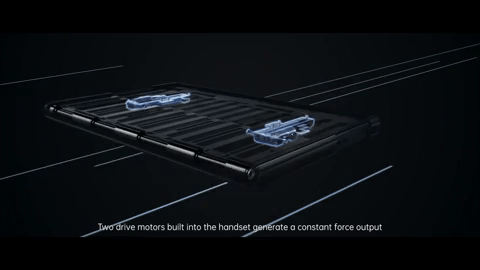
In the end there is an axle, which the display turns around, hiding in another part of the case. This way it technically doesn't fold in half and leaves no trace of a crease or crease (in fact it does, but it's much smaller than we've seen before).
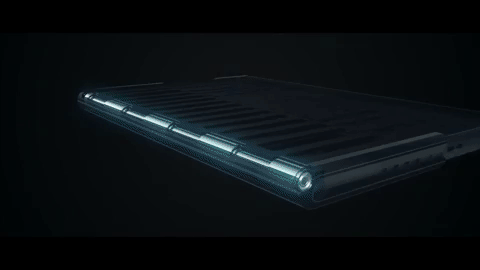
The screen area grows due to the use of lamellae, which move parallel to each other during the transformation.
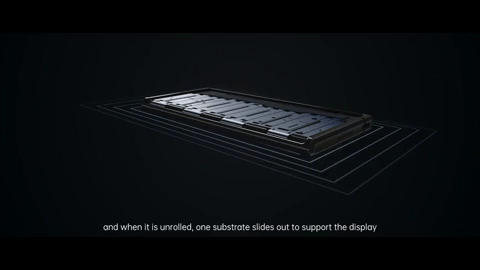
OPPO X 2021 with my own eyes
It is worth saying that OPPO X 2021 is a concept in the working prototype stage, which is not for serial production, but for demonstration of capabilities. Therefore, it is meaningless to apply a whole set of entities such as processor specifications, camera and Android version to it. It looks quite decent and in its usage scenario it resembles the Galaxy Fold, transforming from a smartphone to a mini tablet.
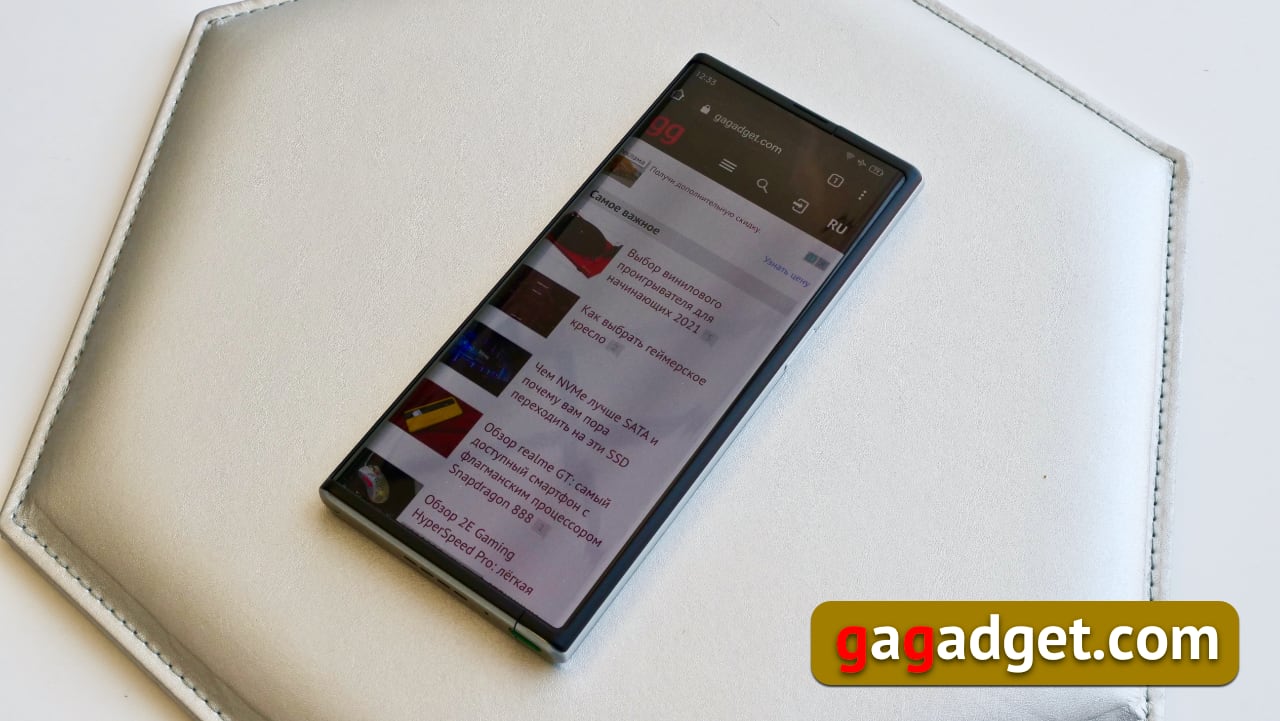
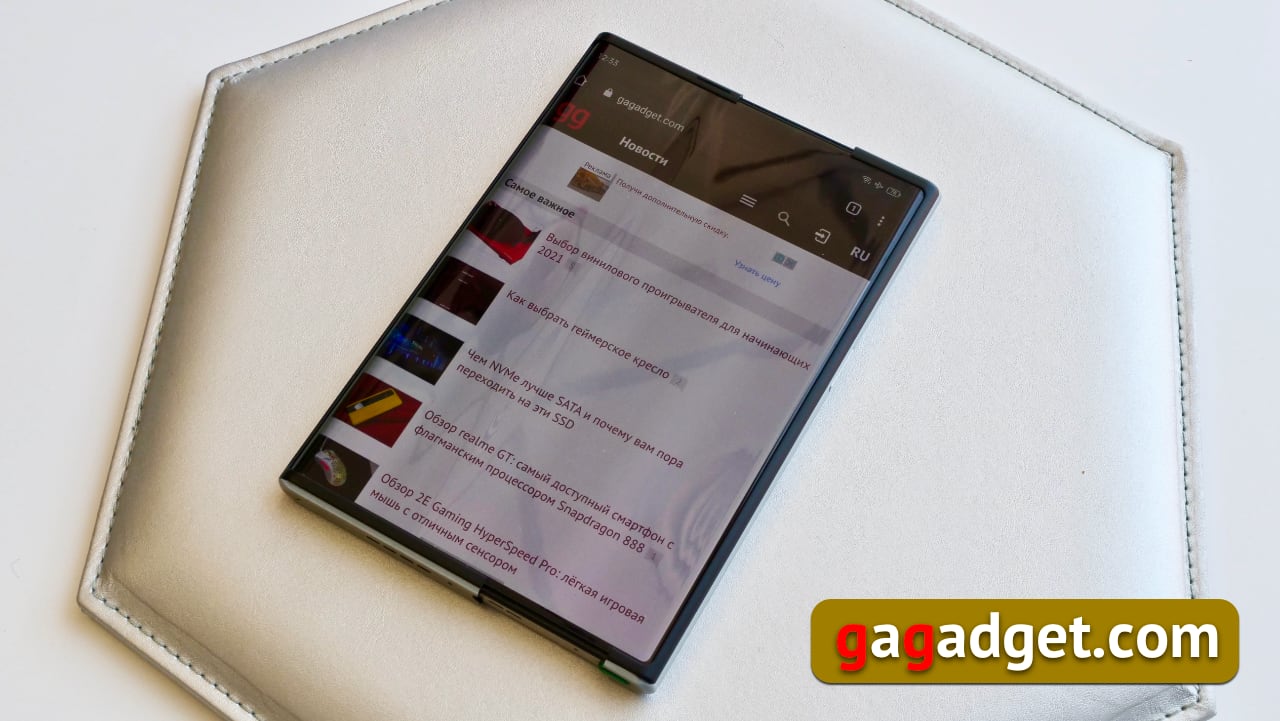
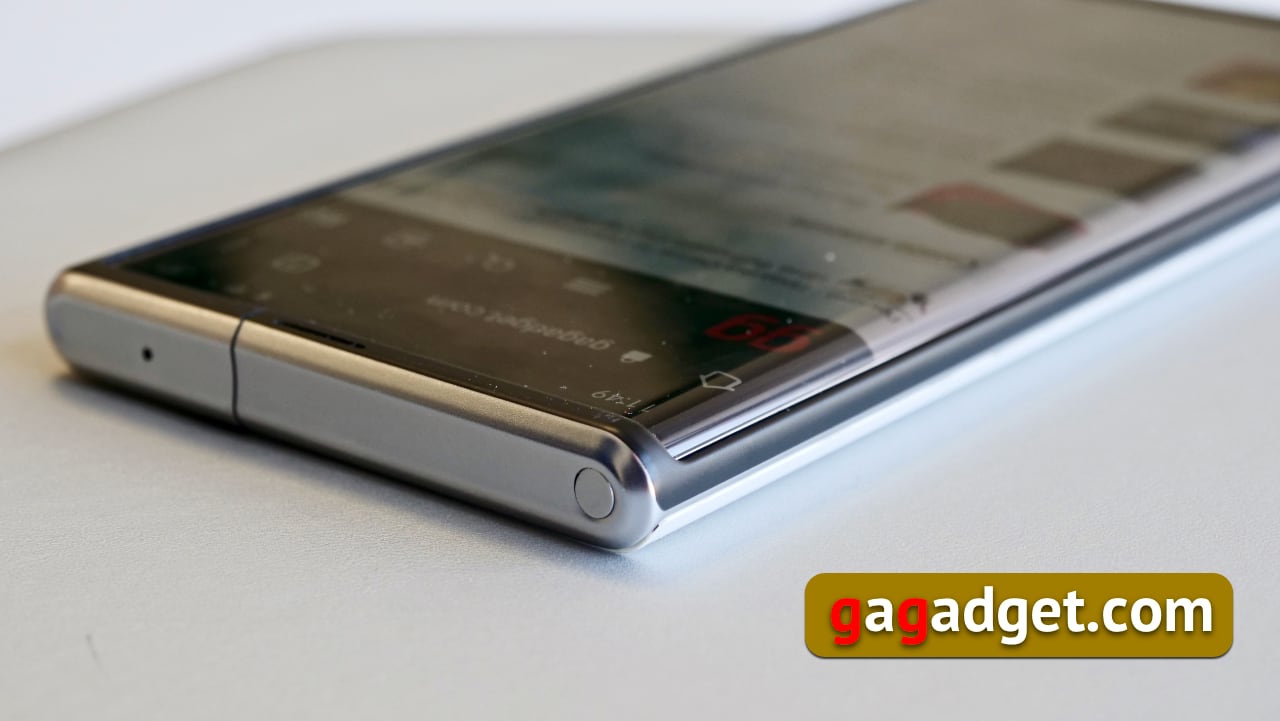
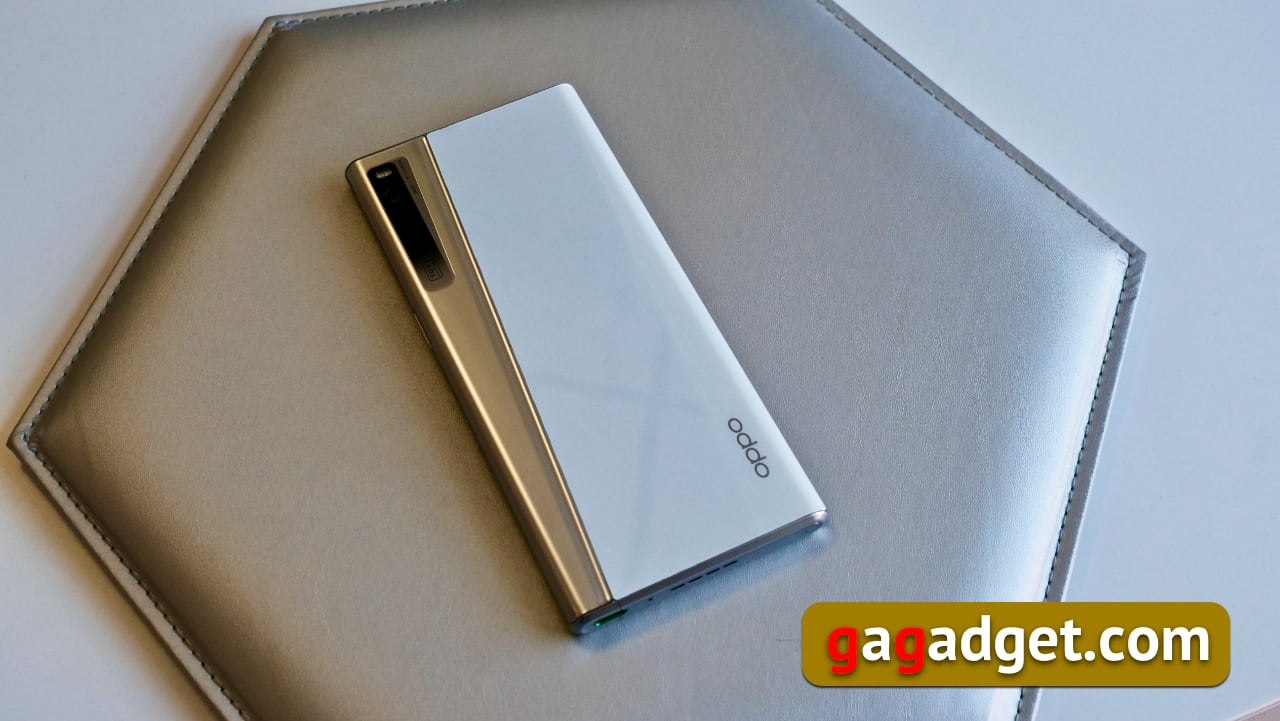

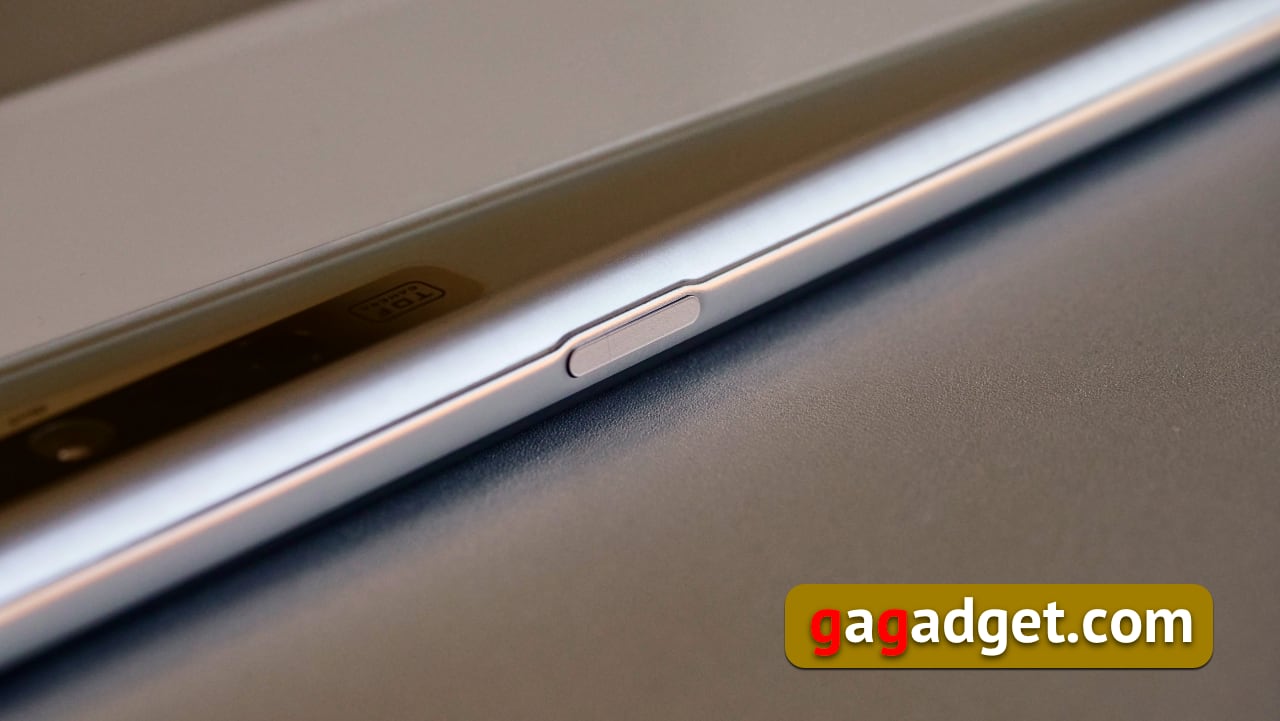
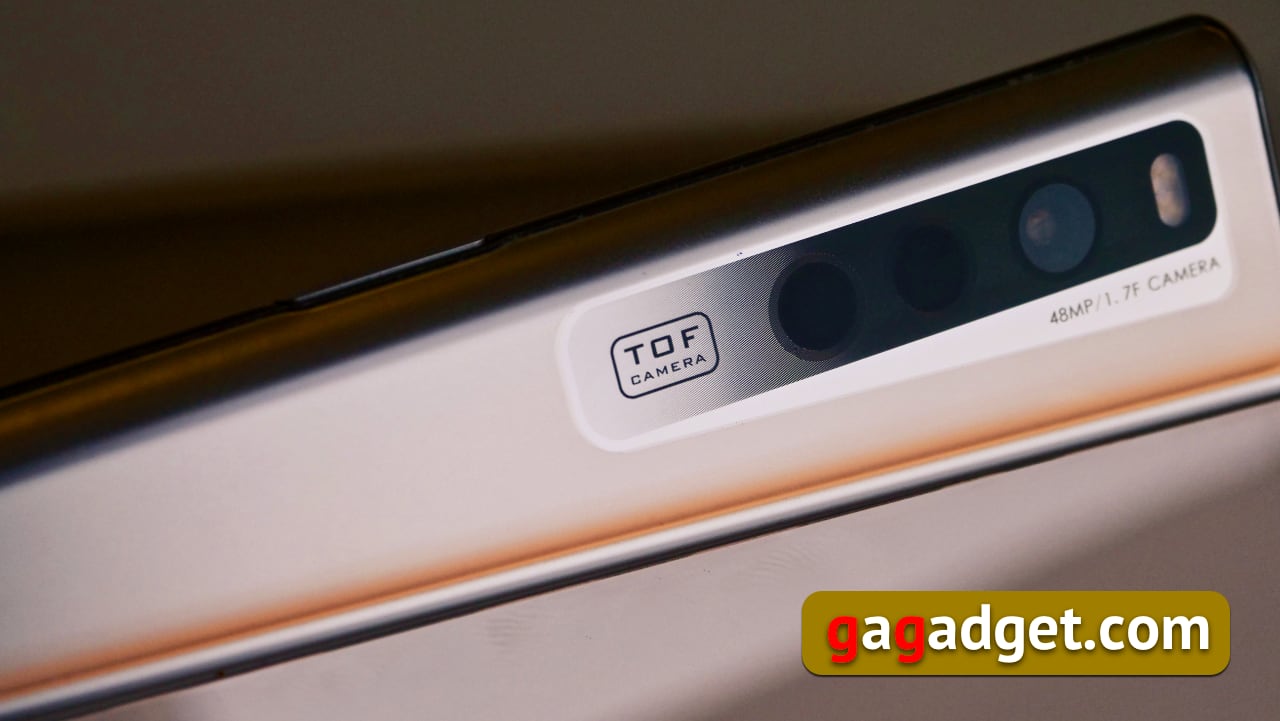

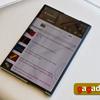



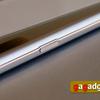

How the display transformation works
There is only one way to open/close the screen (commercial samples may have a different solution): you need to swipe your finger up or down on the touchpad on the side of the case (it looks like a fingerprint sensor in the pictures above). It is not possible to close or open the display by force - it is not provided. It does not work all the time, but you can get the hang of it - after a couple of minutes of training I managed to do everything right, almost always on the first try. It is interesting how the screen changes after the transformation - the picture is animated and "stretched" in parallel.

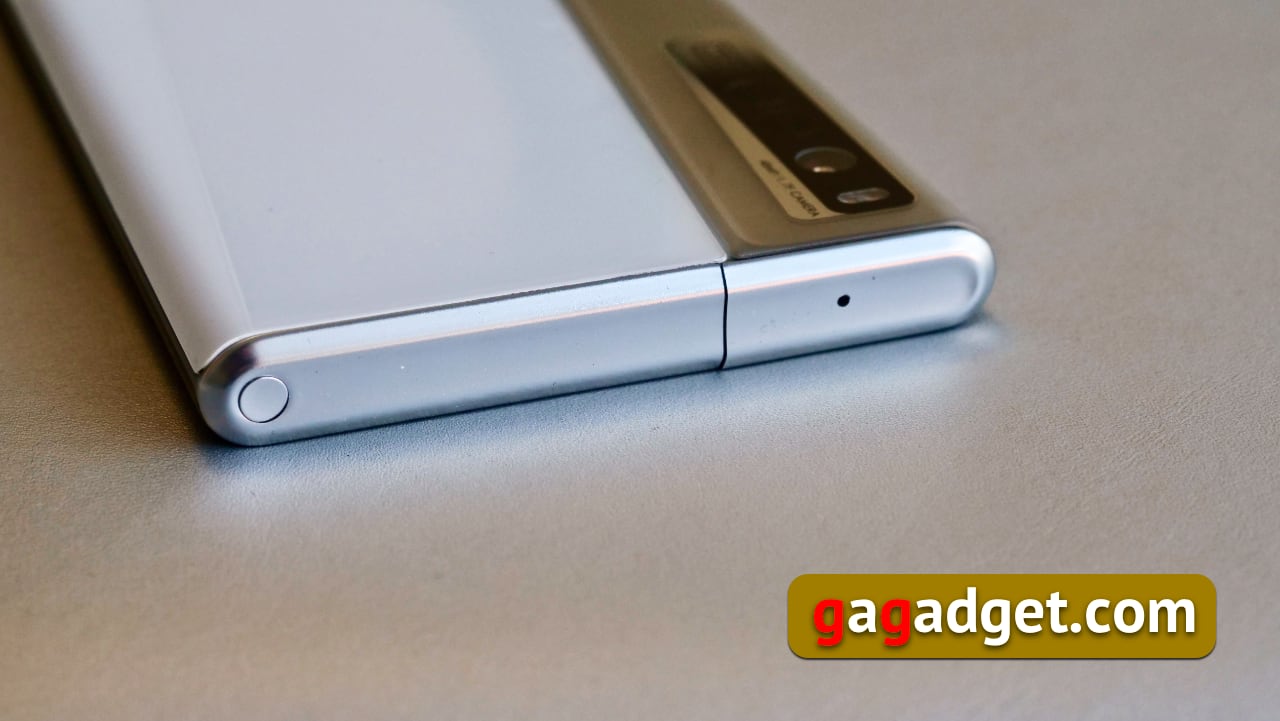
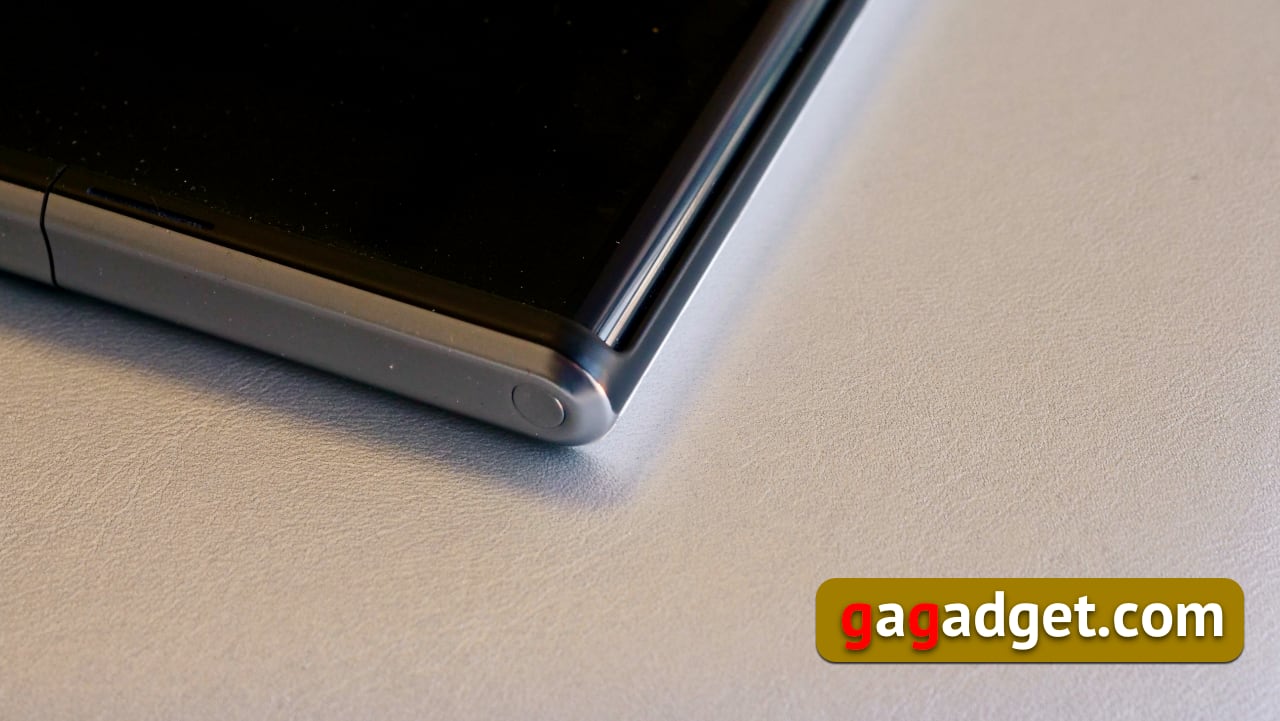
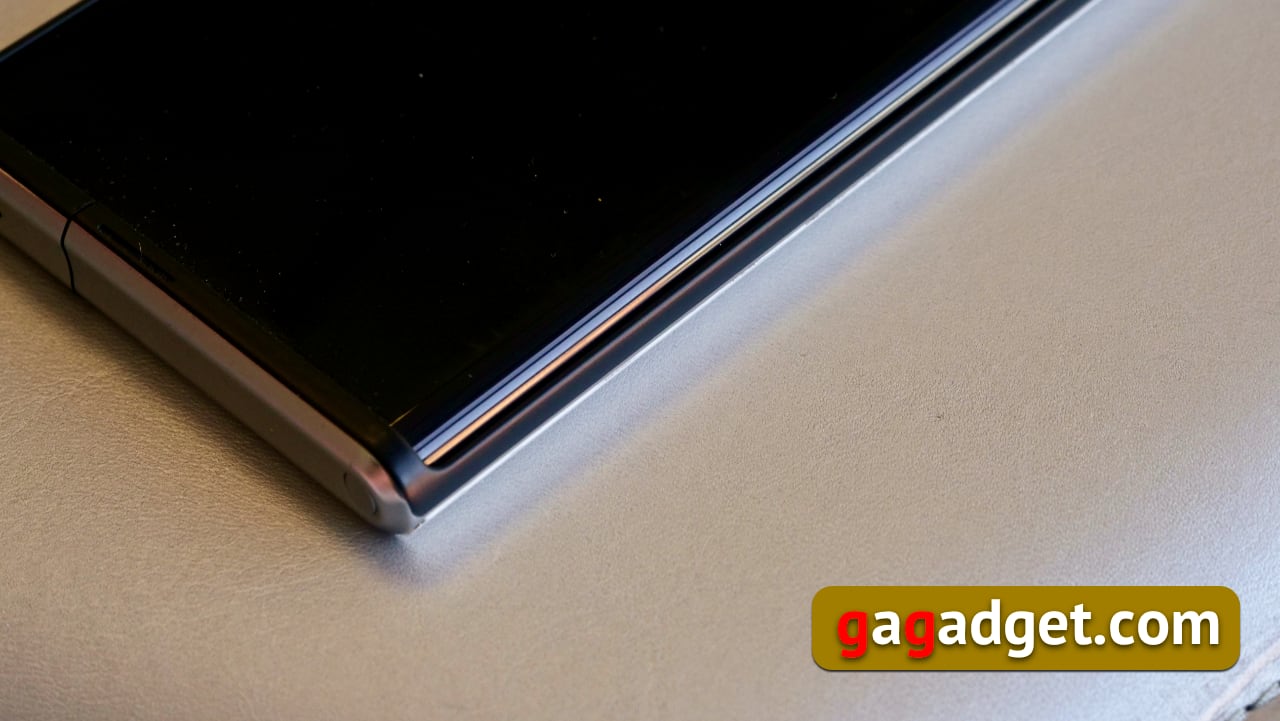


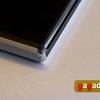

It's true that the fold is almost invisible - it's barely palpable when unfolded, and it's a key advantage over other smartphones with bendable screen that exist today.

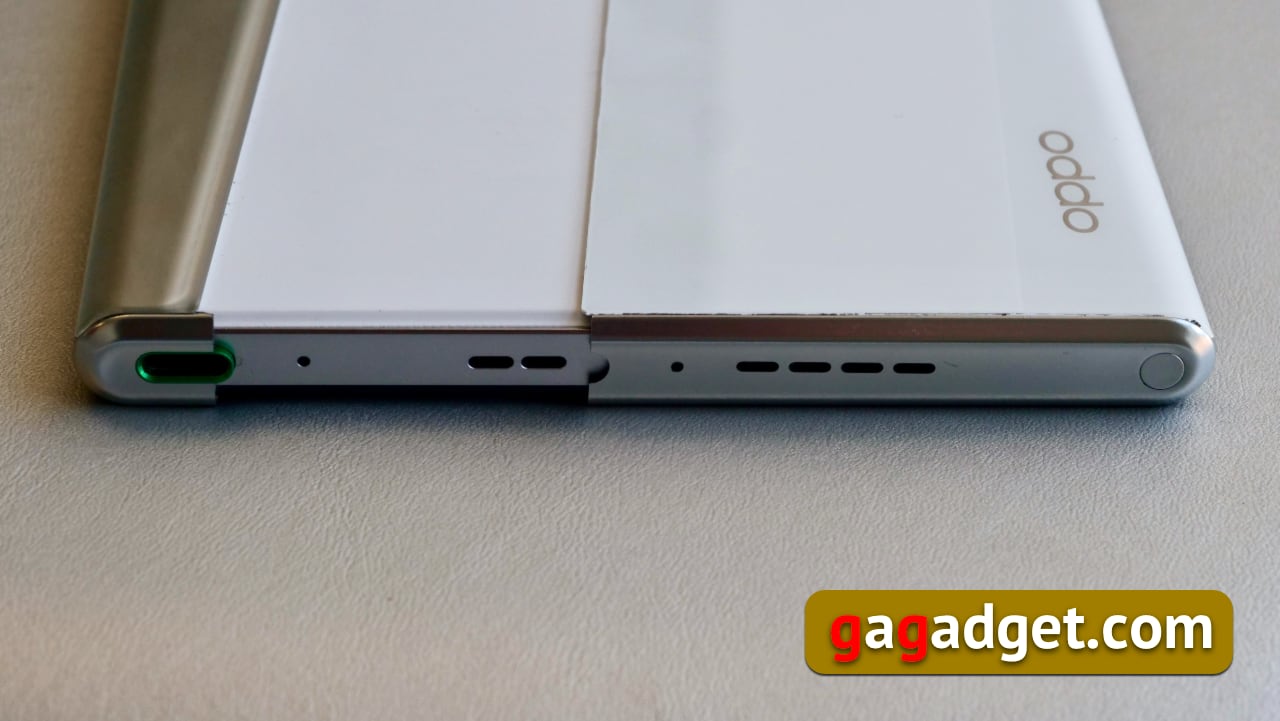

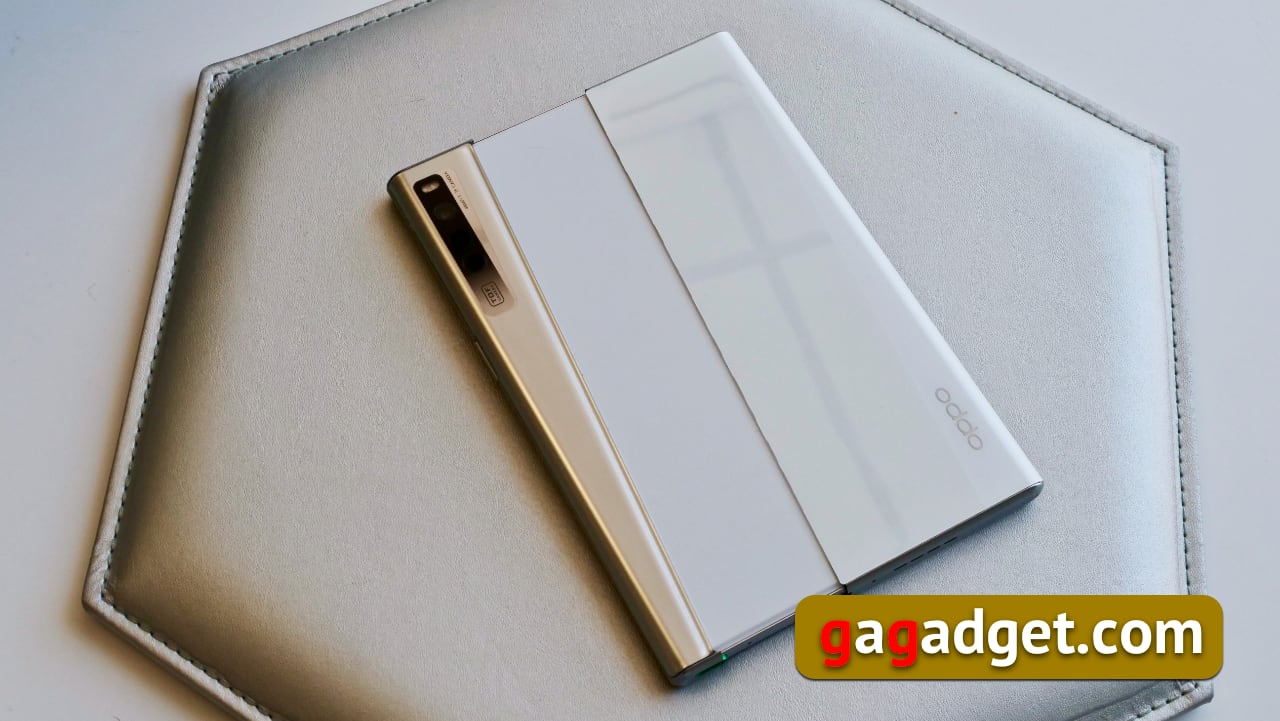
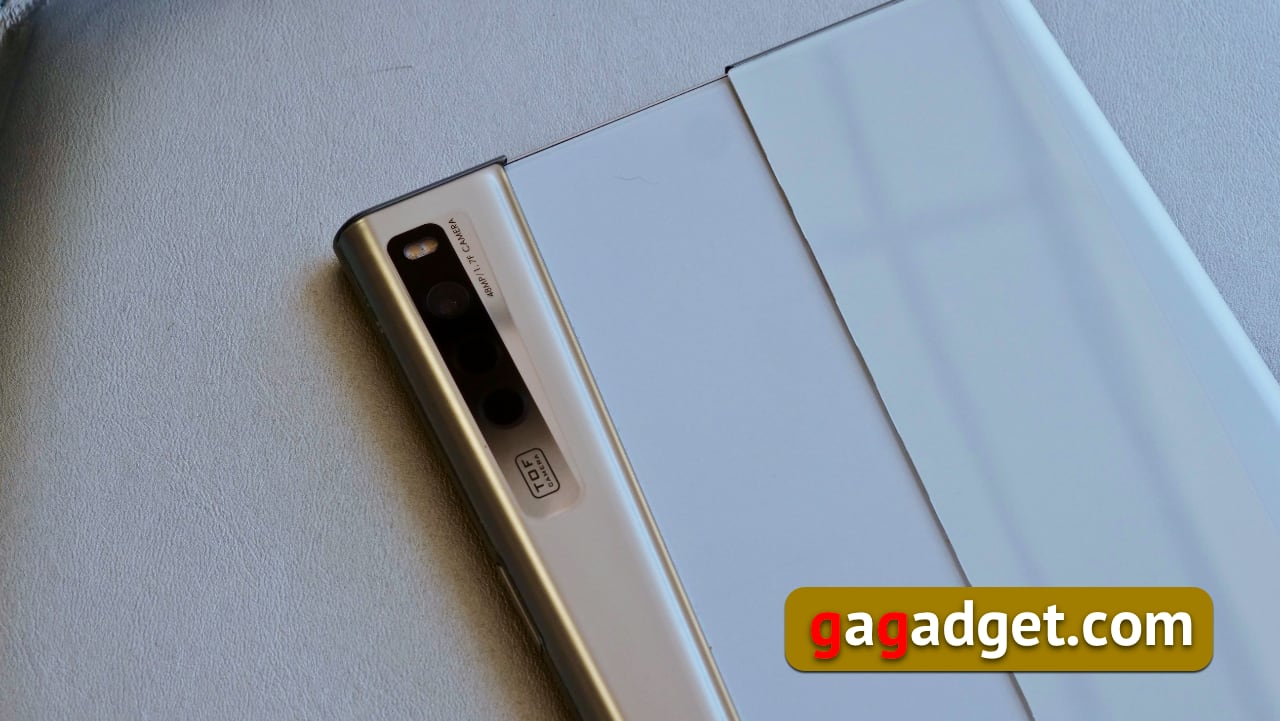




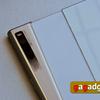
But it's easier to see once than to read the description of the process:
The outer part of the case can be picked up with a fingernail, it is malleable and there is a big enough gap, which (yes, I am ashamed of such an act of vandalism, but what an inquisitive editorial gg in order to understand how everything works) can be further expanded.
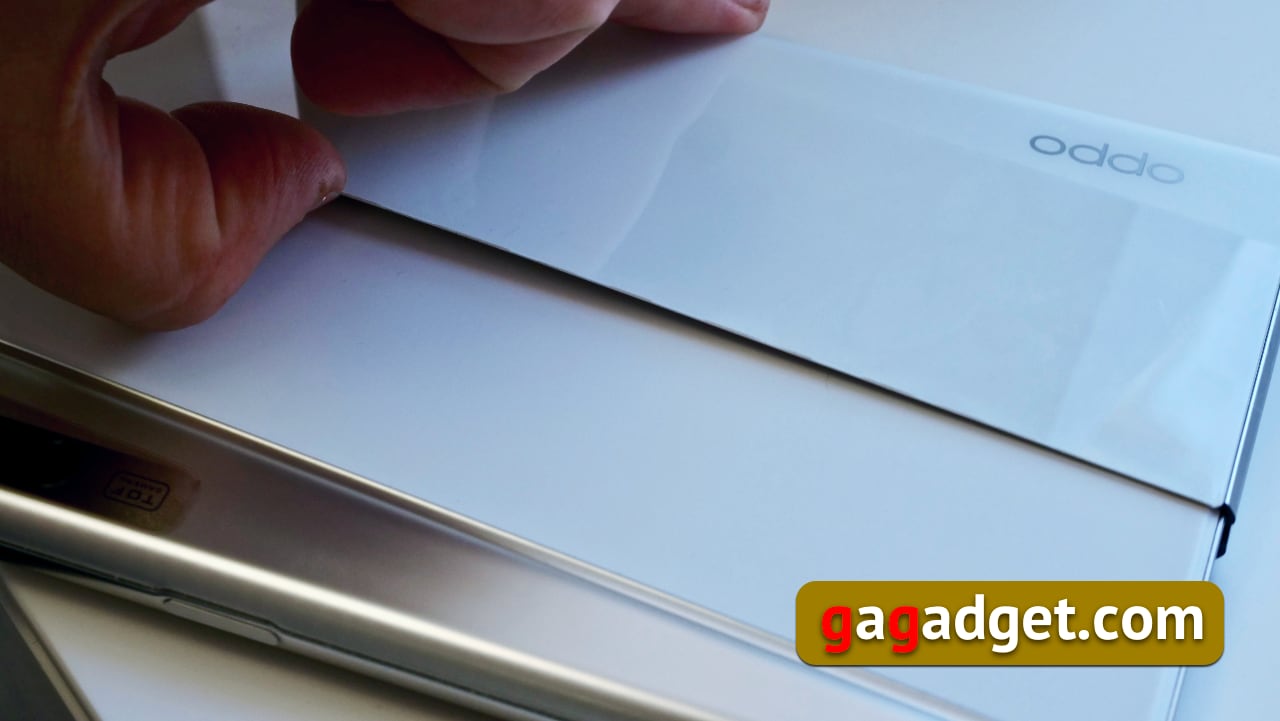
Comparison of OPPO X 2021 with Galaxy Z Fold 3
Of course, it is most correct to compare the size of a smartphone in this form factor with the Galaxy Fold, which we have done.
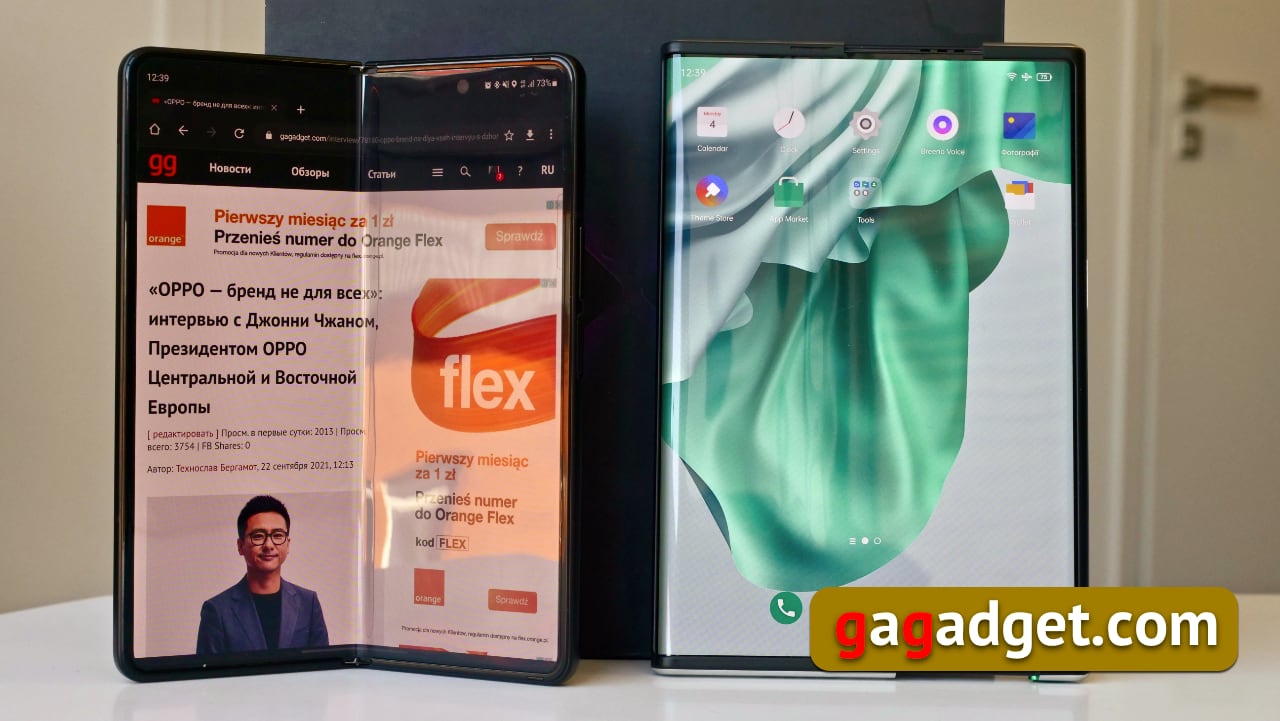

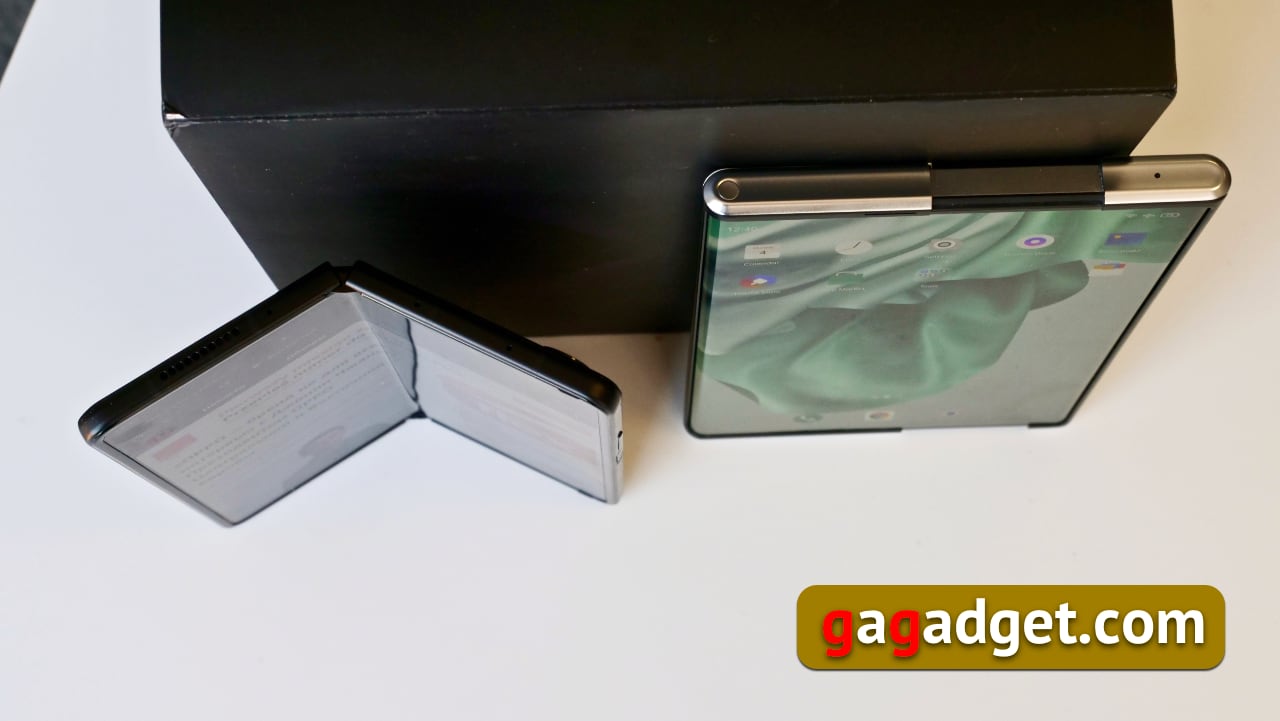

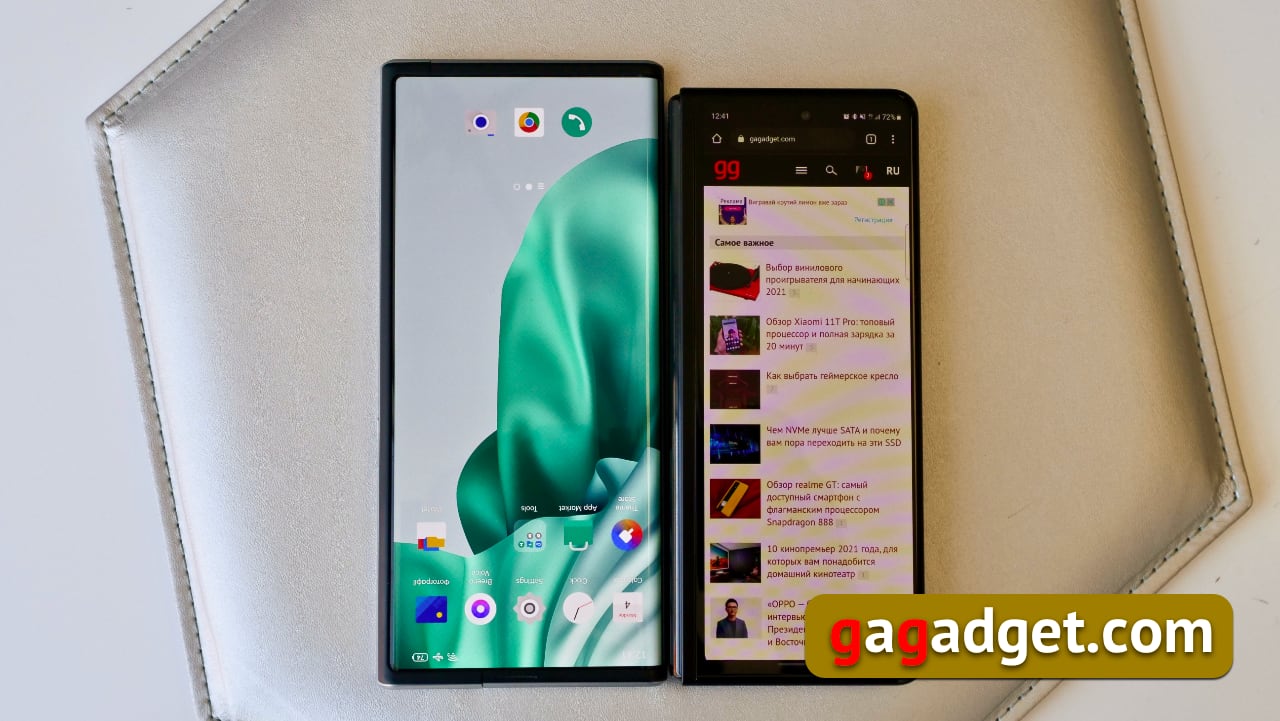
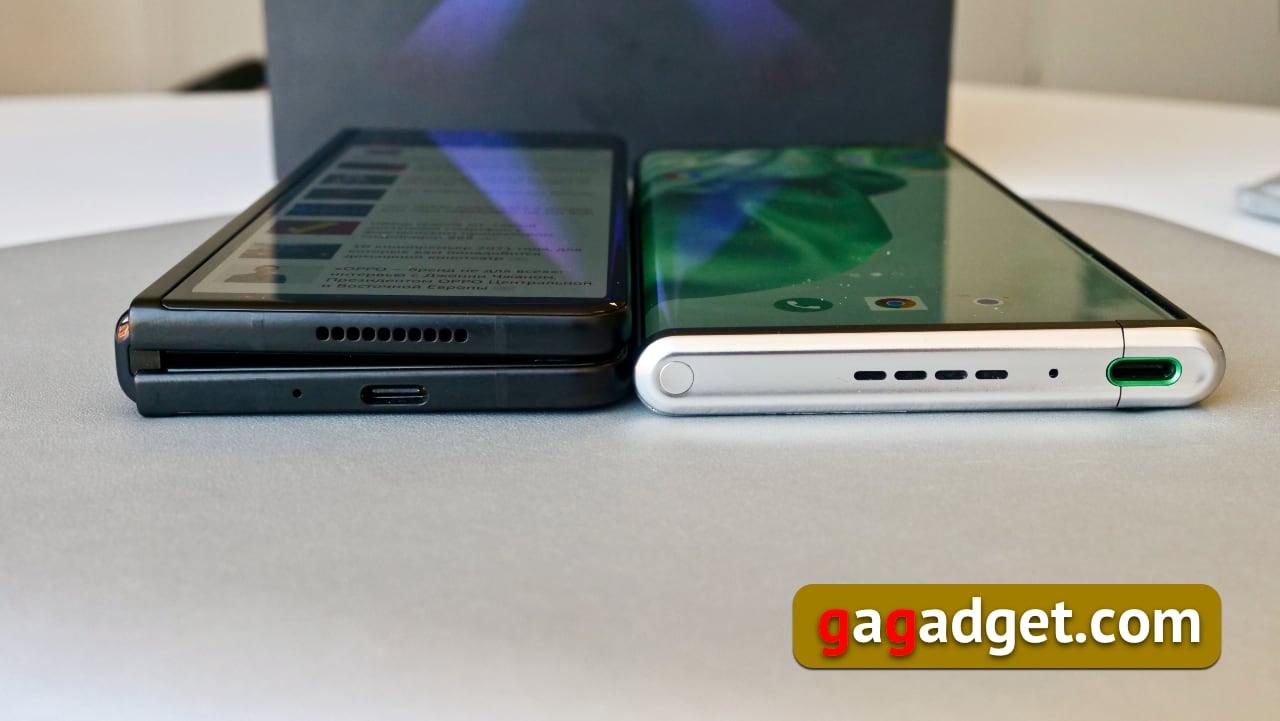
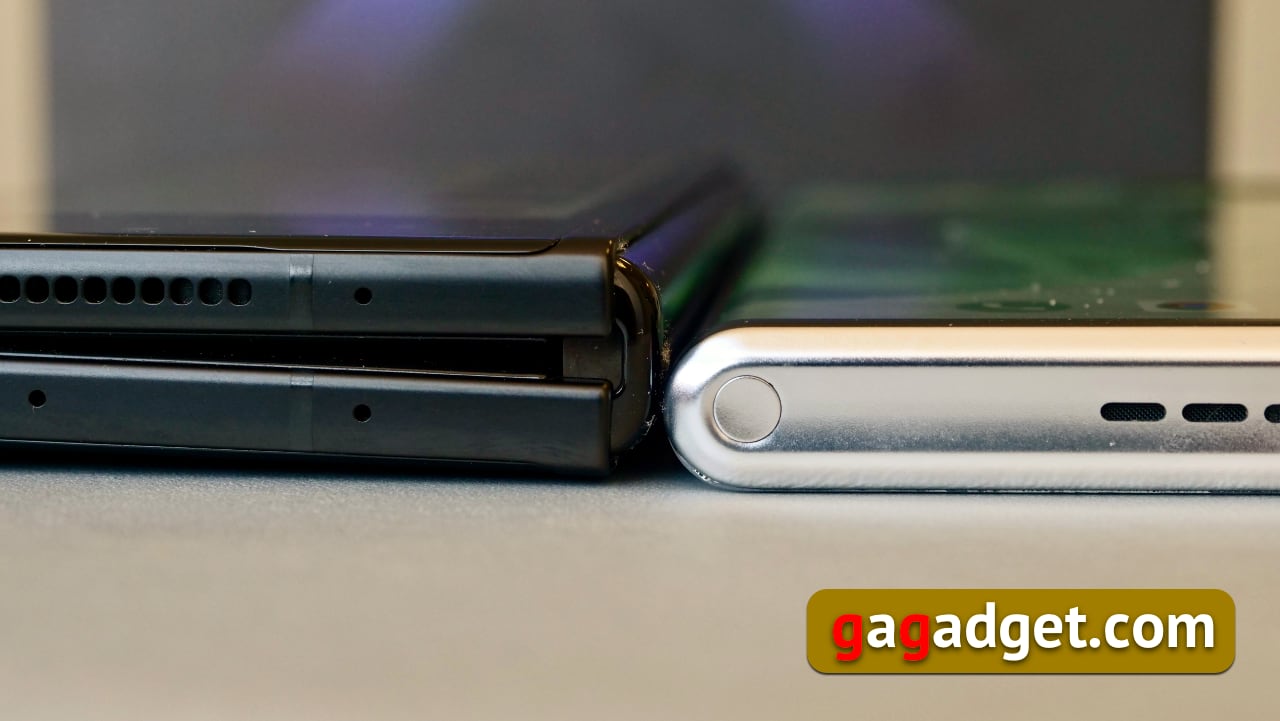







Advantages and disadvantages of the sliding screen form factor
The obvious advantage of this engineering solution is compactness - when folded, the smartphone looks noticeably thinner than the same Fold. The aesthetics here are much better - Fold on Table is always slightly thicker in the hinged section (we have a separate text on why this is and how everything is arranged inside). The disadvantages are also obvious - additional motors mean more mechanical and moving parts, which will greatly affect both wear and tear and reliability, and resistance to impact if dropped. Separate questions are raised by the opening controls - sliding your finger over the touchpad doesn't look like the best solution. Yes, and the transformation of the screen in OPPO X 2021 will always take longer than a simple movement of the hands that unfold Fold. Separately, it's worth saying that in the medium term of several years, such form factors, both Fold and OPPO X 2021 successors will always be more expensive than a flip-flop smartphone, making their consumer audience smaller. Banally a larger display will always cost more.
Bottom line

In the end, OPPO has managed to demonstrate its ability to do something outstanding in such a highly competitive market as smartphones. The OPPO X 2021 is no longer just a concept idea, but an actual working prototype of a new form factor that even has some prospects of coming out as a mass-produced device. I think we will see this device on sale not very soon (optimistically - in a couple of years, pessimistically - never), but it will give engineers a chance to refine and improve the design. Perhaps solve the problem of controlling the transformation of the display in some more reliable and easy-to-use way. Or maybe, in the process, they will invent another smartphone form factor with a flexible screen. There's still plenty of room for engineering creativity, I'm sure.
For those who want to know more
- 5 things you'll love the Samsung Galaxy Z Flip and why this form factor has a future
- Why the Samsung Galaxy Fold made history and changed the smartphone market forever
- How the Samsung Galaxy Z Fold 2 bendable display works (explanation in hyffics)
- Who needs Samsung Galaxy Fold and Huawei Mate X bendable smartphones and why their price should not surprise you
- A touch of the future: 10 things that make the Samsung Z Flip 3 different from the Z Flip
- Mate X - Huawei's first foldable smartphone with 8-inch screen, 5G and triple camera
